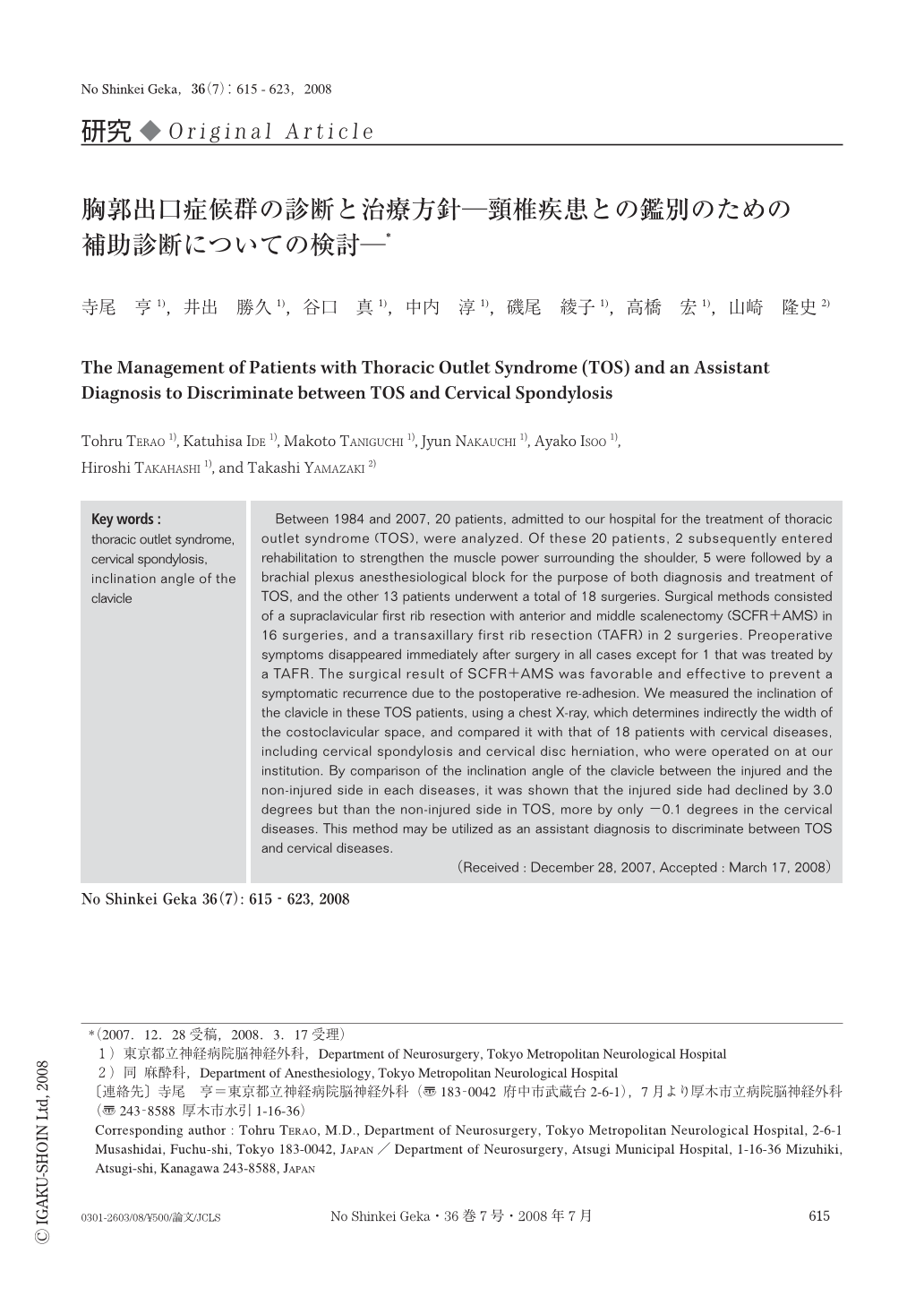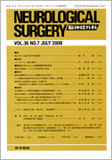Japanese
English
- 有料閲覧
- Abstract 文献概要
- 1ページ目 Look Inside
- 参考文献 Reference
Ⅰ.はじめに
胸郭出口症候群(thoracic outlet syndrome:TOS)は,前斜角筋,中斜角筋,第1肋骨に囲まれた斜角筋三角部や肋鎖間隙部における腕神経叢,および鎖骨下動脈の絞扼によって主に頸肩腕部痛や尺骨神経領域のデルマトームに一致したしびれや痛みを訴える疾患である6,21,22).この疾患の診断から治療までの一連の治療過程12)においては,脳神経外科医のみならず神経内科やリハビリテーション医および理学療法士などの協力が必要とされる4).一般にTOSの治療として,肩甲骨周囲筋の強化リハビリテーションをはじめとした保存的治療11,26)で奏効しない症例には外科的手術を施すが,その手術方法に関しても一定の見解が得られていないのが現状である.また臨床上,頸椎脊柱管狭窄症や頸椎ヘルニアなどの頸椎病変(cervical diseases:CD)を合併した症例では,神経学的異常所見がいずれの疾患から誘発されているかの鑑別が困難な症例が存在する8,17,18,23,24).今回われわれは,当施設に入院し加療したTOS症例を分析し,治療方針,手術に至るまでのプロセス,手術方法およびCDとTOSの鑑別のための補助診断につき論述する.
Between 1984 and 2007, 20 patients, admitted to our hospital for the treatment of thoracic outlet syndrome (TOS), were analyzed. Of these 20 patients, 2 subsequently entered rehabilitation to strengthen the muscle power surrounding the shoulder, 5 were followed by a brachial plexus anesthesiological block for the purpose of both diagnosis and treatment of TOS, and the other 13 patients underwent a total of 18 surgeries. Surgical methods consisted of a supraclavicular first rib resection with anterior and middle scalenectomy (SCFR+AMS) in 16 surgeries, and a transaxillary first rib resection (TAFR) in 2 surgeries. Preoperative symptoms disappeared immediately after surgery in all cases except for 1 that was treated by a TAFR. The surgical result of SCFR+AMS was favorable and effective to prevent a symptomatic recurrence due to the postoperative re-adhesion. We measured the inclination of the clavicle in these TOS patients, using a chest X-ray, which determines indirectly the width of the costoclavicular space, and compared it with that of 18 patients with cervical diseases, including cervical spondylosis and cervical disc herniation, who were operated on at our institution. By comparison of the inclination angle of the clavicle between the injured and the non-injured side in each diseases, it was shown that the injured side had declined by 3.0 degrees but than the non-injured side in TOS, more by only -0.1 degrees in the cervical diseases. This method may be utilized as an assistant diagnosis to discriminate between TOS and cervical diseases.

Copyright © 2008, Igaku-Shoin Ltd. All rights reserved.


